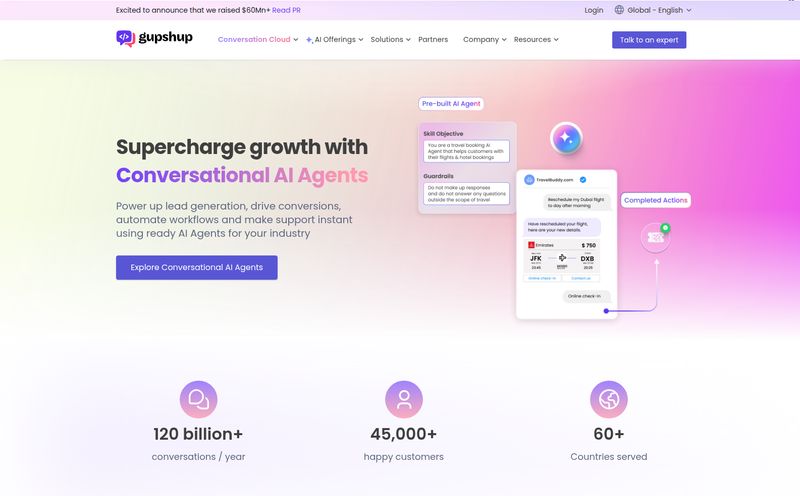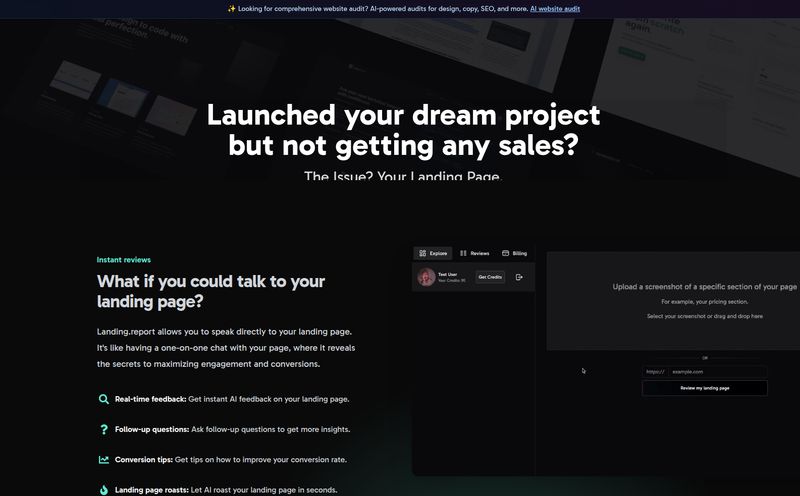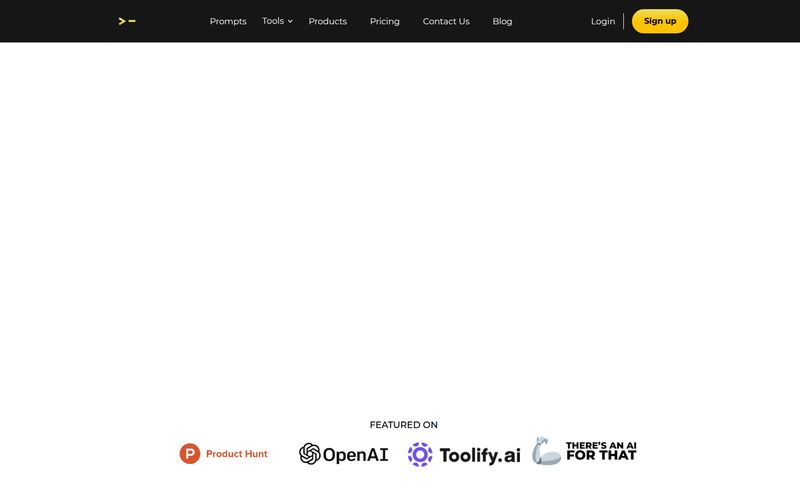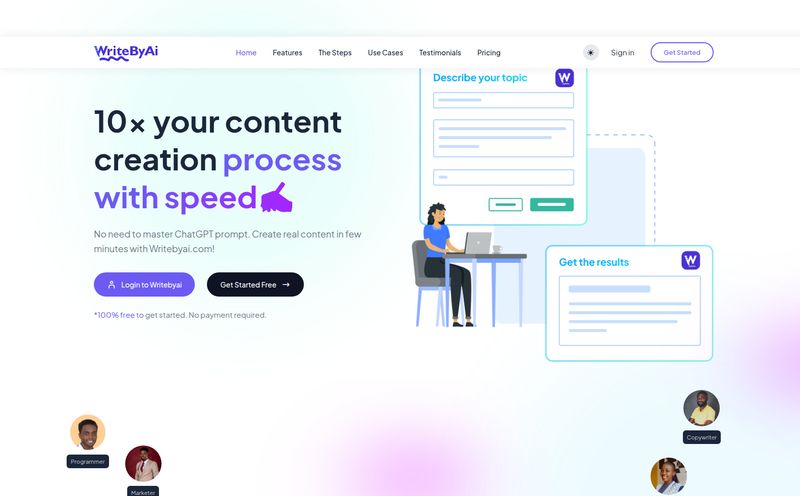If you’re in e-commerce, especially fashion, you know the content hamster wheel never, ever stops. You need fresh visuals for your product pages, new video clips for Reels and TikTok, scroll-stopping ads for Meta... it’s a full-time job on top of your actual full-time job. And photoshoots? Don't even get me started. The logistics, the cost, finding models, the weather turning on you... it's a special kind of chaos.
For years, we’ve just accepted this as the cost of doing business. But what if it wasn't? I’ve been keeping my eye on the AI space, waiting for a tool that genuinely solves this headache for online stores. And I think I’ve found a serious contender. It’s called Whatmore AI, and it’s making some pretty bold claims about creating on-model photos and fashion videos in minutes. Without a camera.
So, is it just another over-hyped AI gadget, or is it the real deal? I rolled up my sleeves and went deep. Here’s what I found.
What Even is Whatmore? (And Why Should You Care?)
Okay, so breaking it down, Whatmore isn't just one thing. It's more like a two-headed beast, but in a good way. It's a Swiss Army knife for modern e-commerce marketing.
- The AI Content Studio: This is the part that feels like black magic. You upload your basic product photos—you know, the simple flatlays or mannequin shots—and it transforms them. It can place your dress on a dozen different AI-generated models, swap out the boring white background for a chic Parisian street, or even animate a static photo into a short, snappy video. It’s a content creation engine.
- The Shoppable Video Platform: This is the part that directly makes you money. Once you have these videos (either from their AI or ones you already have), Whatmore lets you embed them on your website as shoppable, Instagram-style stories or carousels. Think of it as turning your product pages from static catalogs into engaging, interactive experiences.
The whole idea is to tackle two of the biggest problems for online stores: the insane cost and effort of content creation, and the struggle to increase website conversions. A pretty ambitious goal, I have to say.
The Magic Trick: How Whatmore Creates Content from Thin Air
I’m an SEO guy, so I’m naturally skeptical of anything that sounds too good to be true. But the tech here is genuinely impressive. It’s not just about slapping a filter on something; it's about generative AI that understands fashion and context.
From Flatlay to Fabulous: The AI Model Swap
This is the feature that made my jaw drop a little. You take a picture of a t-shirt lying flat on the floor. A totally boring, uninspired photo. You upload it to Whatmore, and a few clicks later, that same t-shirt is being worn by a realistic-looking AI model, posed naturally. You can choose different models to match your brand's vibe and customer demographic. For a startup brand that can't afford a week-long photoshoot with a dozen models, this is... well, it’s a revolution.
Bringing Static Images to Life
We all know video converts better than static images. Whatmore’s “Create Videos from Image” feature takes your high-res product shot and adds subtle motion, zooms, or pans to turn it into a 5-10 second video clip. Perfect for social ads or just making your PDPs feel more dynamic. It’s not going to replace a full-blown brand film, but for high-volume, quick-turnaround ad creative? It's brilliant.
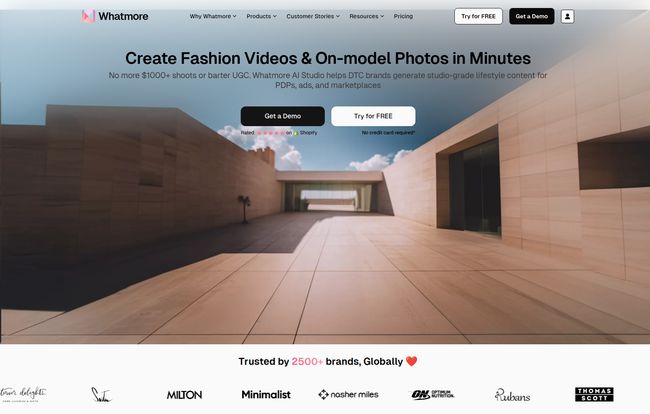
Visit Whatmore
Beyond Creation: Making Your Videos Actually Sell Something
Creating cool visuals is one thing. Making them drive sales is another. This is where the second part of Whatmore's platform comes in, and as a traffic and conversion guy, this is what gets my attention.
Shoppable Videos That Don’t Slow You Down
You can embed these videos directly onto your product and collection pages. A customer can watch a quick video of a dress in motion, and with one click on the “Shop Now” CTA right on the video, add it to their cart. It shortens the path to purchase dramatically.
But here’s the clincher for me: Whatmore claims there is zero page speed impact. As anyone who's fought with Google’s Core Web Vitals knows, embedding heavy videos is usually a death sentence for your loading times. If they've truly cracked this nut with some clever lazy loading or optimized streaming, that alone is worth the price of admission. Slower sites kill conversions and SEO rankings, so this is a massive promise.
Smart Features for Smart Retailers
They’ve also baked in some thoughtful e-commerce features. The system can sync with your inventory, so if a product in a video goes out of stock, it can automatically disable that video. No more frustrating customers by showing them things they can't buy. It also has an analytics dashboard to show you which videos are actually getting clicks and driving sales, so you can double down on what works. Data-driven decisions, we love to see it.
Let's Talk Turkey: The Whatmore AI Pricing Structure
Alright, this part is a little complex because you're essentially looking at two different products with two pricing models. I'll break it down as simply as I can.
The AI Studio Pricing (For Content Creation)
This is for generating the on-model images and AI videos. It works on a credit system, which is pretty common for AI tools. In my experience, it gives you flexibility.
| Plan | Price | Key Features |
|---|---|---|
| Pro | $19/month | Great for trying things out. Gives you 20 avatar and 20 image-to-video generations per month. |
| Growth | $29/month | 120 credits for a mix of video, image, and HTML5 creative generations. |
| Scale | $199/month | 800 credits with better rates, plus a dedicated account manager. For serious volume. |
| Premium | $449/month | 1800 credits, best rates, and priority support. For agencies or large brands. |
The Shoppable Video Platform Pricing (For Your Website)
This is for putting those cool, shoppable video widgets on your site. The pricing is based on your store's traffic and how many people click on the videos.
- FREE Plan: Yep, a real free plan. For new stores, you get 500 video clicks/month and can put videos on your product and home pages. You can't argue with free.
- Starter Plan ($23/month): Jumps you up to 3,000 video clicks/month and adds more customization options and templates. Best for small stores starting to get traction.
- Growth Plan ($63/month): For stores under 50k visitors/month, this gives you 15,000 video clicks, lets you embed videos in emails and SMS, and adds quizzes/lead capture.
- Scale Plan ($119/month): For larger stores, this offers 40,000 video clicks, Meta retargeting audiences, and Google Analytics integration.
I actually like this separated structure. It means you can use just the part you need. Only want to generate some ad creative? Just get a Studio plan. Only want to make your existing videos shoppable? Just get a Platform plan.
The Good, The Bad, and The... Puzzling?
No tool is perfect. Let's get into the nitty-gritty. The pros are obvious: you can create a massive volume of decent-looking content incredibly fast and for a fraction of teh cost of a traditional shoot. The simplified process is a gift for time-strapped entrepreneurs.
Now, for the cons. On their own website, I saw some stats claiming a "0x Increase time on site" and "Up to 0% Conversion rate increase." I have to chuckle at that. Is it brutal honesty? A placeholder they forgot to update? Who knows. It doesn't inspire a ton of confidence, but I'm willing to chalk it up to a web developer having a bad day rather than the tool being ineffective. The concept of shoppable video is proven to increase conversion, so I'd test it for myself rather than trust a typo.
A more realistic concern is the potential for AI-generated content to look a bit... samey. If you and your competitor both use Whatmore with default settings, you might end up with a similar aesthetic. The key, as with any tool, will be using it creatively and developing a unique style within its framework.
My Final Take: Is Whatmore a Game-Changer for E-comm?
So, what's the verdict? In my opinion, yes, Whatmore is a game-changer, specifically for small to medium-sized e-commerce brands in the fashion and apparel space. The ability to generate on-model photography without the astronomical cost and logistical pain is a massive democratizing force. It levels the playing field, allowing smaller brands to present their products with the same polish as bigger players.
Is it for everyone? Probably not. If you're a luxury brand whose entire identity is built on a very specific, auteur-driven photographic style, you're probably not going to replace your star photographer with an AI. But for the 95% of other stores? This tool can free up an immense amount of time, budget, and creative energy to focus on other parts of the business.
It’s a powerful tool that solves a very real, very expensive problem. Just... maybe don't quote their '0% increase' stats in your next board meeting.
Frequently Asked Questions (The Stuff You're Still Wondering)
- Can I use my own videos with the shoppable platform?
- Absolutely. You don't have to use the AI Studio. You can upload your existing video content and make it shoppable on your website using their platform plans.
- Does the AI content have watermarks?
- According to their site, the generated content is watermark-free on all paid plans. The free plan might have some branding, which is standard practice.
- How good is the AI model generation, really?
- From the examples, it looks very good for clean, e-commerce style shots. It excels at showing fit and form. It might struggle with highly artistic or avant-garde concepts, but for product display, it seems more than capable.
- Is the credit system complicated?
- It can take a moment to get used to. Basically, different actions cost a different number of credits. Generating a short video might cost 10 credits, while a static image might only cost 1 or 2. The higher-tier plans offer a better 'per-credit' value.
- Will this hurt my website's SEO?
- The biggest SEO concern with video is page speed. Whatmore's claim of 'zero page speed impact' is a huge point in its favor. If true, it shouldn't hurt your SEO and could even help by increasing user engagement signals like time on page and conversion rate.
Conclusion
The grind for fresh e-commerce content is relentless, but tools like Whatmore AI are a sign that things are changing. By blending AI-powered content creation with a smart, sales-focused shoppable video player, they've built something genuinely useful. It bridges the gap between marketing and merchandising in a way that feels futuristic but is available right now. For any fashion brand feeling the pressure of the content treadmill, Whatmore is, at the very least, worth a serious look. It might just be the best assistant you hire all year.
